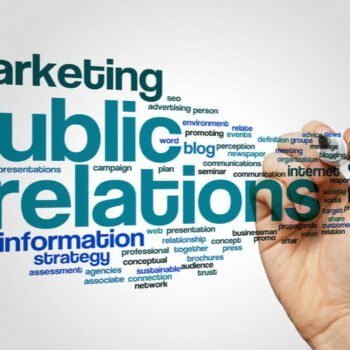The difference between internal and external communications
The key to HR and PR success is keeping staff, customers, clients, contractors and the community up to date with what is happening in your business and to achieve that you need both internal and external communications strategies.
Who updates your employees on staff changes or important announcements? What is your process for communicating with customers? Who is in charge and what is the checklist for releasing information if there is a serious safety incident or accident? What do you send internally and what do you say publicly?
Large companies can have an advantage in that they mostly have in-house teams who manage internal communications and partner with public relations agencies to manage external communications.
For smaller and growing businesses it is equally as important that systems and structures are in place to reach the right audience at the right time.
To begin, you have to understand why both internal and external communications are important so we’ve put together an advice piece.

What is internal communications?
Internal communications is how you share information with employees, board directors and people within your organisation. The goal is to ensure everyone is kept up to date with company news and it is a chance to build moral by promoting milestones, social responsibility achievements and sharing staff celebrations.
Internal communications, particularly for small businesses, can be as simple as a regular email or EDM newsletter. For larger organisations the role of internal communications can require managing and creating content for a staff intranet, emails, EDMs, newsletter and managing social media.
Staff meetings and presentation events are also important dates to include in an internal communications calendar. It’s often an opportunity to acknowledge outstanding employee achievements and long-service milestones.
What is external communications?
External communications is about finding ways to reach and engage with your clients, customers, contractors, stakeholders, business partners and the broader market and community.
The goal of external communications is to build brand awareness, connect with your key audience and strengthen your reputation.
External communications can include EDMs to your database, digital marketing through social media channels, content articles or blogs that drive traffic to your website and assist with Search Engine Optimisation (SEO) and media outreach through public relations.
Most importantly you must integrate your internal and external communications strategies
What is said internally to staff must reflect what you are prepared to say publicly. While keeping staff informed, especially during big announcements or a crisis, is important it is just as critical to know that the information can be leaked in an instant.
Consistent messaging
Brand messaging must be consistent across all internal and external communications and it’s a powerful tool for reinforcing key messages, missions and values.
Crisis response
Employees should never find out news about the business – good or bad – through the media.
If an incident occurs or a major announcement is going to negatively impact employees the timing of all internal and external communications is an even greater priority. Staff and internal stakeholders must be told first and the company’s crisis management plan activated which should include a reminder about privacy and the company’s media policy.
External communications during a crisis require a multi-media approach including issuing a statement to media, managing and monitoring social media and responding to and liaising with stakeholders, journalists and the appointed spokesperson.
Integrated communications plan
By having an internal and external communications plan, a calendar for pro-active engagement allows time for reporting, writing and scheduling regular updates and prepares you to respond to reactive situations should they arise.
If you’d like advice on how to build and implement a PR and communications plan, contact us.


